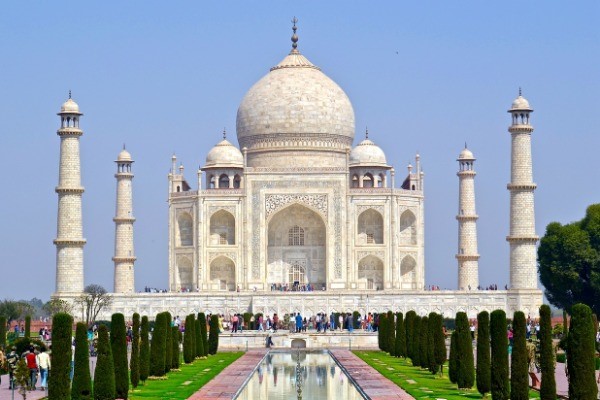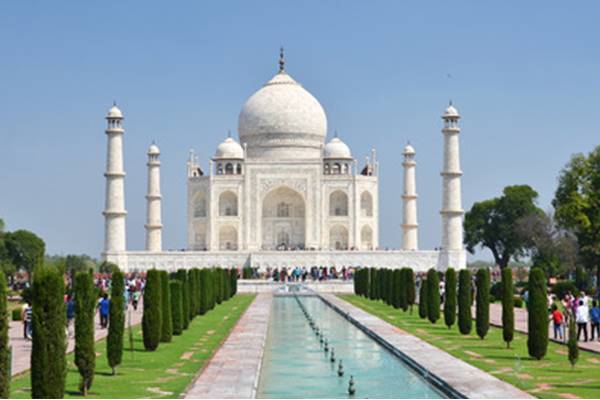Uncovering the Wonders of the Taj Mahal: 10 Fascinating Facts
Published: 05/09/2023

The Taj Mahal is a wonder of the world that has captured the imagination of people from all over the globe. This magnificent structure, located in the city of Agra in India, has a rich history and is surrounded by a number of fascinating and little-known facts. Here are some interesting facts associated with the Taj Mahal:
- A Marvel of Mughal Architecture: The Taj Mahal was constructed by Mughal Emperor Shah Jahan in memory of his beloved wife Mumtaz Mahal. The monument is considered a masterpiece of Mughal architecture, which is a blend of Indian, Persian, and Islamic architectural styles.
- The Name of the Taj Mahal: The name "Taj Mahal" is derived from the name of Shah Jahan's wife, Mumtaz Mahal. In Persian, "Taj" means a crown, while "Mahal" means palace, so the name of the monument translates to "Crown Palace".
- A Symbol of Love: The Taj Mahal is widely regarded as a symbol of love, as it was built by Shah Jahan in memory of his wife, who died while giving birth to their 14th child. The emperor was said to be devastated by her death and vowed to build a monument to honor her memory.
- Building Materials: The Taj Mahal is made entirely of white marble, which was brought to Agra from the city of Makrana in Rajasthan. The marble was transported using a fleet of over 1,000 elephants.
- The Colors of the Taj: The Taj Mahal appears to change colors throughout the day, depending on the angle of the sun. It appears pinkish in the morning, milky white in the evening, and golden at night when illuminated by the moon.
- Architectural Marvels: The Taj Mahal is adorned with several architectural marvels, including the use of calligraphy to decorate the monument. The inscriptions on the walls of the monument are verses from the Quran.
- The Black Taj Mahal: Legend has it that Shah Jahan had plans to build a black marble replica of the Taj Mahal for himself on the other side of the river Yamuna. However, the project was abandoned due to his imprisonment by his own son.
- Environmental Threats: The Taj Mahal is under threat from environmental pollution, particularly from the nearby industries that contribute to the high levels of air pollution in the region. The Indian government has taken steps to curb pollution and protect the monument from further damage.
- Visitors and Tourists: The Taj Mahal is one of the most popular tourist attractions in India, attracting millions of visitors from around the world every year. It is estimated that over 70,000 people visit the monument every day.
- Optical Illusion: The four minarets of the Taj Mahal are slanted slightly outward, a design feature meant to create an optical illusion. The minarets appear vertical from ground level but actually lean outward slightly to prevent them from collapsing onto the main structure in case of an earthquake. This feature is an example of the remarkable engineering and attention to detail that went into the construction of the Taj Mahal.
In conclusion, the Taj Mahal is not just a monument, but a symbol of love, architectural excellence, and cultural heritage. Its rich history and fascinating facts continue to captivate people from all over the world, making it a must-see destination for anyone interested in history, culture, and architecture.
Add Your Comment
Use the following form to leave your comment on this article.

